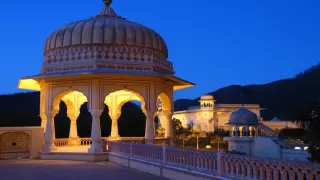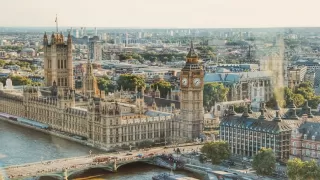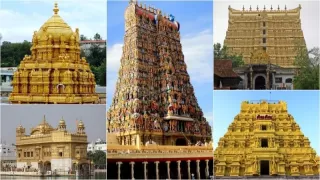One day after the new Ram Lalla idol was dedicated, on Tuesday, the doors of the Ram temple in Ayodhya were opened to the public. This morning, there was a massive line of worshippers outside the temple, waiting to enter the sanctum sanctorum.
The following should be known as the temple gates available to the public today.
Prime Minister Narendra Modi laid the foundation stone for the Ram Mandir on August 5, 2020. The Ayodhya Ram Temple is one of the most significant pilgrimage locations for Hindus. It is said to be the birthplace of Lord Ram and is regarded as a sacred spot.
In Charge of the Ram Temple
The temple is overseen by Teerth Kshetra, Shri Ram Janmabhoomi. According to its website, the temple's construction is being supervised by the trust that was established by the federal government on the Supreme Court's directives. The temple occupies 2.7 acres. Larsen and Toubro, or L&T, was the company that built the Ram Temple.

Image Source: Twitter
Getting to the Ram Mandir in Ayodhya
Once in Ayodhya, there are many local transportation alternatives to choose from, including cycle rickshaws and auto-rickshaws. The calm setting of the temple, which lies on the banks of the Sarayu River, is ideal for a spiritual trip.
Darshan Timings: At the Ayodhya Ram Mandir, devotees can get the heavenly Darshan from 7:00 am to 11:30 am and from 2:00 pm to 7:00 pm.
Aarti Timings: Three times a day, at 6:30 am for Jagaran or Shringar Aarti, 12:00 noon for Bhog Aarti, and 7:30 pm for Sandhya Aarti, devotees can participate in the Ram Lalla Aarti. People must produce a valid ID evidence to receive a pass issued by the trust in order to visit the Aarti.
Cost to Enter the Ayodhya Ram Mandir
The temple offers free general admission. The temple will conduct three distinct forms of Aartis, for which free admissions will be provided. Attendance at the Aarti will be restricted to those who own passes. Each Aarti can accommodate just thirty people at a time.
About the Statue of Ram Mandir

Image Source: Twitter
The idol of "Ram Lalla," or young Ram, was sculpted by Mysuru craftsman Arun Yogiraj. The new idol weighs between 150 and 200 kg and is crafted of black stone. The god is shown on the idol as a standing five-year-old youngster.
Cost of Building the Ram Temple
Thousands of devotees are expected to attend this historic occasion. The BJP-led Central government established the Shri Ram Janmabhoomi Teerth Kshetra Trust in February 2020 with the responsibility of building the 1,800-crore Ram Mandir.
About Infrastructure
There are four temples on the property, one each for the Sun deity, the goddess Bhagwati, Lord Ganesha, and Lord Shiva. On the northern side lies the Maa Annapurna temple, while on the southern side is a Hanuman temple.

Image Source: Twitter
The 14-meter-thick coating of roller-compacted concrete (RCC) used in the construction of the Ayodhya Ram temple gives the structure the look of artificial rock.
A granite plinth 21 feet high has been built to defend against ground dampness. All indigenous technology is being used in the construction of the temple, with special attention paid to environmental water conservation.
Other Details You Need to Know
- No agencies are authorized by the Shri Ram Janmabhoomi Teerth Kshetra to make reservations online.
- Through the official website's contribution option, which uses a mobile/OTP login, devotees may choose to donate online to the temple trust. On the other hand, vigilance is necessary to prevent falling for phoney websites.
- In Ayodhya, several communal kitchens, ranging from Nihang Singhs to ISKCON, are operating to provide 'langar' food to worshippers. These communal kitchens, which are open in every part of the city, provide freshly prepared hot meals to pilgrims that swarm to the holy city.
- The temple complex has two ramps and a lift at the entrance to help the elderly and those with special needs. It is intended to be 'atmanirbhar' in its own unique manner. To worship Lord Ram, those who choose to walk will need to ascend thirty-two stairs. The temple has an eastward entrance and a southward exit.
- Additionally, there is a fire brigade unit within the temple complex, which will have access to an underground reservoir for water.
- The temple, which occupies a 70-acre compound, was inspired by the traditional Nagara architectural style. The temple, which is 380 feet long, 249.5 feet wide, and 161.75 feet high, was built to last a millennium. It would be a three-story temple having five mandaps - Nritya Mandap, Rang Mandap, Gudh Mandap, Kirtan Mandap, and Prarthana Mandap - along with the Main Shikar.
Construction Completion Date
The head of the temple building committee, Nripendra Misra, stated that the three-story Ram temple in Ayodhya will be finished by December of this year.
Also Read: How Much Does Ram Temple Cost and How Does It Help the UP Economy?

































